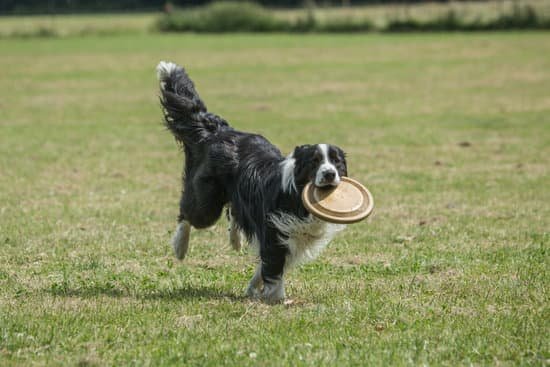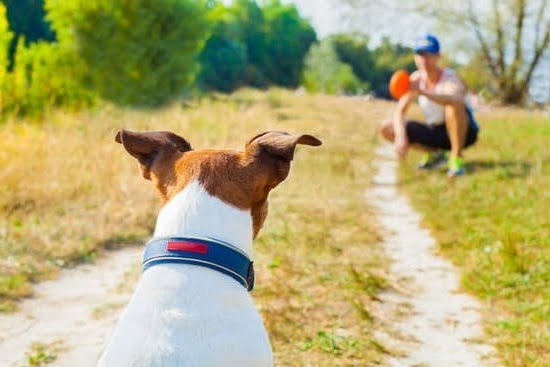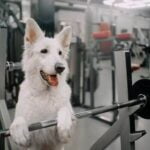Is your home constantly cluttered with dog toys? Are you tired of constantly picking up after your furry friend? If so, then learning how to train your dog to put away his toys is the solution you’ve been looking for. Teaching your dog to clean up not only helps keep your home tidy, but it also provides mental stimulation for your pet and strengthens the bond between you and your four-legged companion.
Understanding the importance of teaching your dog to clean up is essential in creating a harmonious living environment for both you and your pet. This article will guide you through the process of training your dog to put away his toys, from understanding your dog’s behavior to troubleshooting common challenges. By following our step-by-step training process and incorporating positive reinforcement, you’ll be amazed at how quickly your pet can learn this new skill.
With the right tools and a bit of patience, you can transform cleaning up into a fun activity for both you and your dog. This article will provide valuable insights into why dogs hoard toys, the basic commands that are important for this training, and how to choose the best toy organizer for your pet. Get ready to celebrate as you watch your dog proudly clean up after himself and enjoy a tidier living space as a result.
Understanding Your Dog’s Behavior
Dogs are known for their love of toys, often scattering them around the house in a playful manner. However, some dogs have a tendency to hoard their toys, keeping them in specific areas or even hiding them under furniture. This behavior can stem from their natural instinct to protect and guard resources, as well as from anxiety or stress. Understanding why dogs hoard toys is essential in training them to put away their toys.
There are several reasons why dogs hoard toys, including:
- Instinctual behavior: Dogs have a natural instinct to protect and guard their possessions, such as toys and food.
- Anxiety and stress: Some dogs may hoard toys as a coping mechanism for anxiety or stress, similar to how humans might hoard items for comfort.
- Lack of boundaries: Without proper training and guidance, dogs may not understand where to keep their toys and end up hoarding them in various places.
It is important for dog owners to observe their pet’s behavior and try to understand the underlying reasons for toy hoarding. By recognizing the root cause of this behavior, owners can then take steps towards teaching their dog to clean up and put away their toys in a positive and effective manner.
Setting the Groundwork
When training your dog to put away his toys, it is important to set the groundwork with basic commands that your dog should know. These basic commands will provide the foundation for teaching your dog more complex tasks, such as cleaning up after himself. Here are some essential commands that your dog should be familiar with:
- Sit: Teaching your dog to sit on command is a fundamental skill that can be used in various situations, including when it’s time to clean up his toys.
- Stay: A crucial command for ensuring that your dog remains in place while you instruct him to pick up and put away his toys.
- Come: This command is useful for calling your dog over to the designated area where he should put away his toys.
By mastering these basic commands, your dog will be better equipped to learn how to exhibit good behavior when it comes to cleaning up after playtime.
In addition to these basic commands, it is also beneficial if your dog has a strong grasp of “drop it” or “leave it” commands. These commands can be useful when directing your dog on which specific toy to pick up and put away.
For example, if you instruct him to pick up a specific toy and he picks up another one instead, being able to give the “drop it” command will prove very helpful in achieving successful toy clean-up training sessions.
The Right Tools for the Job
Dogs love to play with toys, but sometimes their love for toys can lead to a messy home. This is why choosing the best toy organizer for your dog is important in training them to clean up after themselves. When picking a toy organizer, consider the size and number of your dog’s toys, the space where it will be placed, and the ease of access for your dog.
One option for a toy organizer is a simple basket or bin that can hold all of your dog’s toys. Look for one that is sturdy and easy to clean, as it will likely get dirty from slobber and dirt from the toys. Another option is a hanging storage solution, such as an over-the-door shoe organizer or wall-mounted pockets. This can help save space, especially in smaller homes.
It’s also important to consider the accessibility of the toy organizer for your dog. If it’s too difficult for them to reach or open, they may become frustrated and give up on cleaning up their toys. Choose an organizer that allows your dog to easily put away their toys without struggling. By selecting the right toy organizer, you will set the stage for successful training in teaching your dog to put away his toys.
| Toy Organizer Option | Considerations |
|---|---|
| Basket or Bin | Size, durability, and ease of cleaning |
| Hanging Storage Solution | Space-saving options and accessibility for dogs |
Step-by-Step Training Process
Teaching your dog to pick up and put away his toys can be a fun and rewarding experience, both for you and your furry friend. The step-by-step training process is essential to ensure that your dog understands what is expected of him and how to execute the task effectively.
To begin the training process, start by teaching your dog the basic commands of “fetch” and “drop it.” These commands are fundamental in helping your dog understand the concept of picking up toys and letting go of them. Use positive reinforcement techniques such as treats, praise, and playtime to encourage your dog when he successfully follows these commands.
Once your dog has mastered the “fetch” and “drop it” commands, begin introducing the specific command for putting away toys, such as “clean up” or “put away.” Start this process by guiding your dog to pick up a toy using the “fetch” command, then incorporate the new command to signal that it’s time to place the toy in its designated storage area.
Be patient with your dog during this phase of training, as it may take some time for him to understand the new command.
Consistency is key in teaching your dog to put away his toys. Set aside dedicated training sessions each day to practice cleaning up toys with your dog. Over time, he will learn to associate the new command with the action of putting away his toys, turning it into a fun game rather than a chore. Remember to use positive reinforcement consistently throughout this process to reinforce good behavior and make cleaning up an enjoyable experience for your canine companion.
Positive Reinforcement
Teaching your dog to put away his toys can be a challenging task, but with the right motivation and rewards, it can become a fun and fulfilling activity for both you and your furry friend. Positive reinforcement is an important aspect of training any dog, and when it comes to cleaning up toys, it’s no different. By rewarding your dog for putting away his toys, you are encouraging good behavior and creating a positive association with the task.
One effective way to reward your dog for cleaning up his toys is by using treats. When your dog successfully picks up a toy and puts it away in the designated toy organizer, immediately give him a treat and verbal praise.
This will help reinforce the behavior and make him more likely to do it again in the future. Make sure to use high-value treats that your dog really enjoys, as this will further motivate him to clean up his toys.
In addition to treats, you can also use toys or playtime as a reward for cleaning up. After your dog has put away all his toys, engage in a short play session with his favorite toy as a special reward.
This will not only reinforce the behavior of cleaning up but also create a positive association between cleaning up and having fun. Remember to keep the rewards consistent and exciting for your dog, so he remains motivated to continue putting away his toys regularly.
Troubleshooting Common Challenges
Understanding Your Dog’s Resistance
It’s not uncommon for some dogs to resist the idea of cleaning up their toys. Understanding the reasons behind this resistance is crucial in addressing the issue. Dogs may refuse to clean up their toys due to lack of proper training, fear, or simply because they haven’t associated cleaning up with a positive experience. By identifying the root cause of your dog’s reluctance, you can then tailor your approach to effectively address the problem.
Reinforcing Positive Associations
One way to overcome your dog’s resistance to cleaning up is by creating positive associations with the task. Start by using treats or praise as a form of positive reinforcement when your dog begins to pick up and put away his toys. Additionally, make sure that the cleaning process is always followed by a fun activity or playtime, so that your dog sees it as part of an enjoyable routine rather than a chore.
Consistency and Patience
Consistency is key when troubleshooting common challenges in teaching your dog to clean up. Be patient and persistent in your training efforts, and avoid getting frustrated if progress seems slow. Consistently practicing and reinforcing the behavior you desire will eventually lead to success. Remember that every dog learns at his own pace, so maintaining patience and understanding is essential in addressing any challenges that arise during the training process.
Incorporating Clean Up Time Into Your Daily Routine
Once your dog has mastered the art of putting away his toys, it’s important to incorporate clean up time into your daily routine. This will help reinforce the habit and make it a fun activity for your furry friend.
Set aside specific times during the day for toy clean up, such as after playtime or before meals. By making it a regular part of your dog’s routine, he will come to see cleaning up as an enjoyable task rather than a chore.
To make putting away toys even more engaging, consider turning it into a game for your dog. You can use interactive toys or puzzles that require him to put them back in their designated storage.
You can also hide treats or favorite toys around the house and encourage your dog to find and then put them away in their proper place. By adding an element of fun and challenge, you’re not only reinforcing the clean up behavior but also providing mental stimulation for your pet.
Another way to make clean up time more enjoyable is by involving the whole family. Encourage everyone in the household to participate in toy clean up with your dog. Not only does this create a bonding experience between family members and the pet, but it also teaches responsibility and cooperation to children. By turning clean up time into a group activity, you’re not only keeping the house tidy but also fostering positive habits and relationships within the family unit.
Conclusion
In conclusion, teaching your dog to put away his toys is not only a convenient skill to have, but it also fosters a stronger bond between you and your furry friend. By understanding the reasons behind your dog’s behavior and employing the right tools and training techniques, you can successfully train your dog to clean up after himself.
By celebrating your dog’s new skill, you are not only acknowledging his hard work and capability to learn, but you are also creating a more organized and cleaner home environment for both of you. This achievement is a testament to the time and effort you have invested in training your dog, and it is a rewarding experience that will benefit both of you for years to come.
Ultimately, incorporating clean-up time into your daily routine will make putting away toys an enjoyable habit for your dog and an effortless task for you. By maintaining consistency with positive reinforcement and patience when facing challenges, you can create a positive learning experience for your dog while reaping the benefits of a tidier living space. Congratulations on reaching this milestone with your canine companion.

Welcome to the blog! I am a professional dog trainer and have been working with dogs for many years. In this blog, I will be discussing various topics related to dog training, including tips, tricks, and advice. I hope you find this information helpful and informative. Thanks for reading!





